Our group explores diverse topics in non-equilibrium quantum physics. Historically, we have worked extensively on periodically-driven (Floquet) systems, which use strong drive to engineer physics that is inaccessible or even impossible in equilibrium. Recently, we are considering the limit where the photons used for driving are treated as quantum degrees of freedom in their own right, yielding interesting non-equilibrium models in cavity QED and central spin physics. Other interests include phases and phase transitions in open quantum systems, path integral methods for non-equilibrium quantum dynamics, techniques for improving quantum sensing, non-equilibrium physics approaches to quantum information and computing, and visualization techniques for complex quantum systems.
News
Magnetic impurities play an important role in controlling topological states of matter and enabling topological transport. However, the magnetic impurities themselves are affected by the topological bands as well, giving rise to an interesting interplay between itinerant electrons and localized impurities. In a recent preprint, we analyzed the RKKY interaction induced by surface states of a topological crystalline insulator. The four symmetry-protected Dirac cones that appear at low energy and readily modified, and in particular we argue that they are amenable to control by continuous-wave optical drive. This allows in situ control over topological surface states and, therefore, surface magnetic order.
Continuing our study of many-body localization in the presence of a global photon mode in cavity QED (cf. here, here, and here), in a new preprint we consider the case of strong electromagnetic coupling, as is common for charged particles in an electromagnetic cavity. We show that stronger coupling to the global cavity mode actually slows down the particles by dressing them with heavy photon excitations, enabling localization — a.k.a., cavity-induced many-body localization. This, in fact, will be the generic fate of charged particle dynamics at ultrastrong coupling, which we show by a modified high-frequency expansion. Another upshot of this expansion is the realization of a photon number-dependent version of coherent destruction of tunneling, which arises in our model in the Floquet limit of large photon number.
We are delighted to welcome a new postdoc, Mohsen Yarmohammadi, to our group. Mohsen has just finished his PhD from TU Dortmund with the group of Prof. Dr. Götz Uhrig. Welcome to UTD!
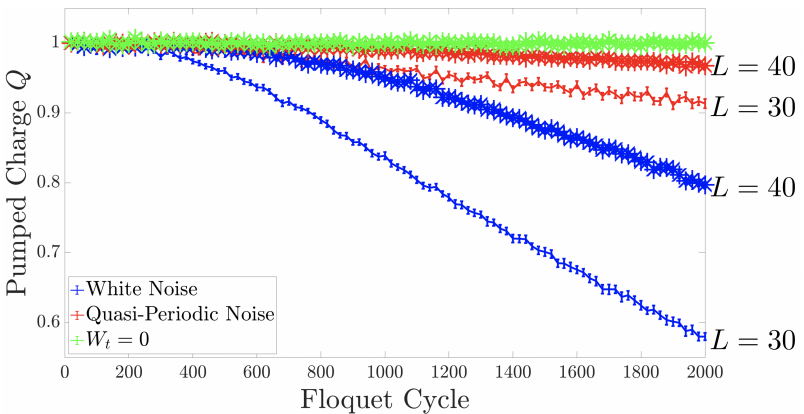
Having demonstrated stability of the anomalous Floquet-Anderson insulator to noise, we studied the case of replacing truly random noise by quasiperiodicity. The resulting dynamics show a similar phase diagram, but with subdiffusive motion of the edge states leading to slower decay of the topological response.
Congratulations to our former student, Ian Timms, who is now a quantum computing engineer at Amazon!
Our work on topological pumping in noisy Floquet systems has been published in PRL! Congratulations to Ian!

We show universal dynamical signatures of edge states in the Ising model with symmetry-breaking boundary field. The power law decay allows for counting edge states and provides a novel method for examining boundary criticality. https://arxiv.org/abs/2111.11428

We show that different unfoldings of a Lindblad master equation give rise to different measurement-induced phases and phase transitions. In particular, unitary unfoldings do not admit an area law phase. We show that Bell pair disentanglement is a useful proxy for many-body entanglement entropy of the steady state and use this to argue for optimality of a certain non-projective generalized measurement. Despite the fact that the open-system dynamics upon averaging over measurements has area law operator entanglement, this optimal unfolding has a volume law phase a low measurement strength. https://arxiv.org/abs/2111.11391
Congratulations to Ian for successfully defending his PhD! Dr. Timms, welcome to the club.
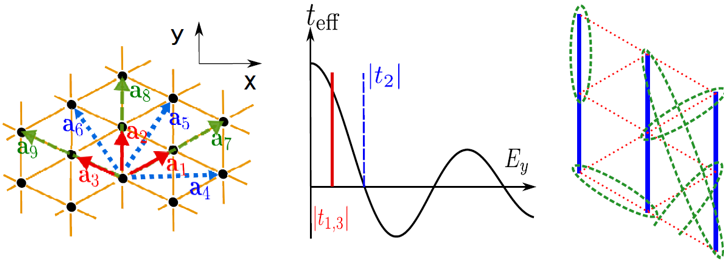
We propose that the Floquet technique of coherent destruction of tunneling can be applied to tune the geometry of moire lattices formed from transition metal dichalcogenide (TMD) heterostructures at experimentally realistic electric field intensity. This allows tuning the native triangular lattice Fermi-Hubbard model to a square lattice Hubbard model, which is the archetypal model for high-temperature superconductivity, as well as in between these limits where various classes of spin liquid have been predicted. arXiv:2103.09874

We use a tensor network method known as multilayer multiconfigurational time-dependent Hartree to study non-equilibrium dynamics of localization in a centrally coupled qudit model, where TEBD is not feasible. Under appropriate scaling, the localized system acts as a well-defined bath for the central degree of freedom; localization and thermalization of the system is reflected in the dynamics as well. The methods are extensible to other centrally coupled systems, such as cavity QED. PRB 103, 134201 (2021)

The Aspen Winter Conference on Many-Body Cavity QED has now been officially rescheduled for December 5-11, 2021, hopefully in a post-COVID world. Looking forward to seeing everyone in person soon!
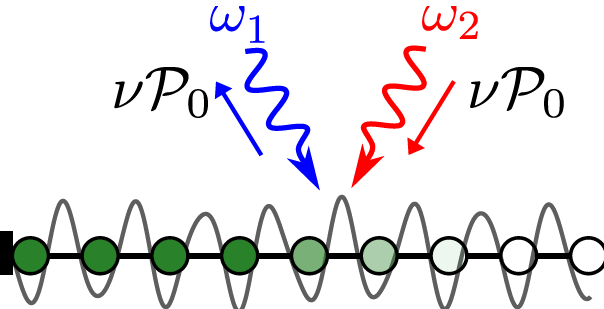
We demonstrated a new topological phases of matter (the quasiperiodic Floquet-Thouless energy pump) that is stable to disorder by driving a one-dimensional fermionic chain by two incommensurate frequencies. arXiv:2010.11485. Now published in PRL.
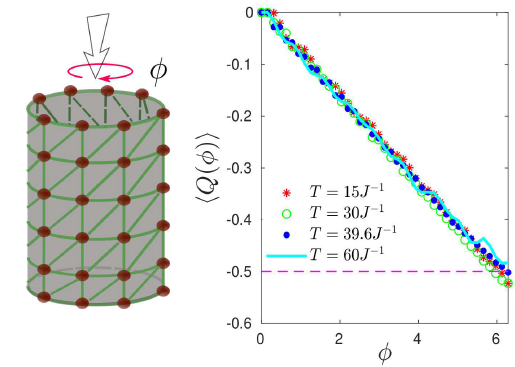
We demonstrate quantized fractional charge pumping in a small lattice using engineering of topological flat bands from Floquet techniques. arXiv:2009.00087. Now published in PRB.

We demonstrate a central spin model with an inverted mobility edge, where high energy states are localized and low energy states are delocalized. arXiv:2008.12796
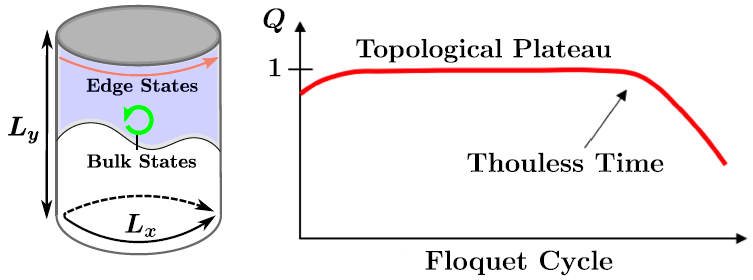
We show that the topological response of the anomalous Floquet-Anderson insulator is stable against symmetry-breaking noise up to the Thouless time, which diverges in the thermodynamic limit. arXiv:2006.10736. Now accepted to PRL.
